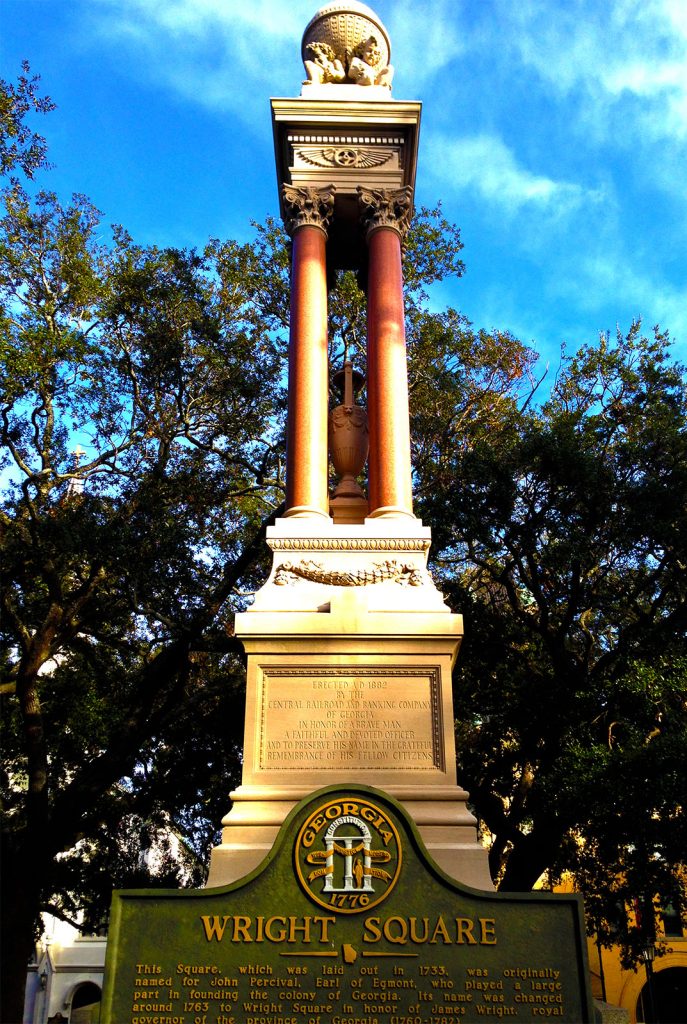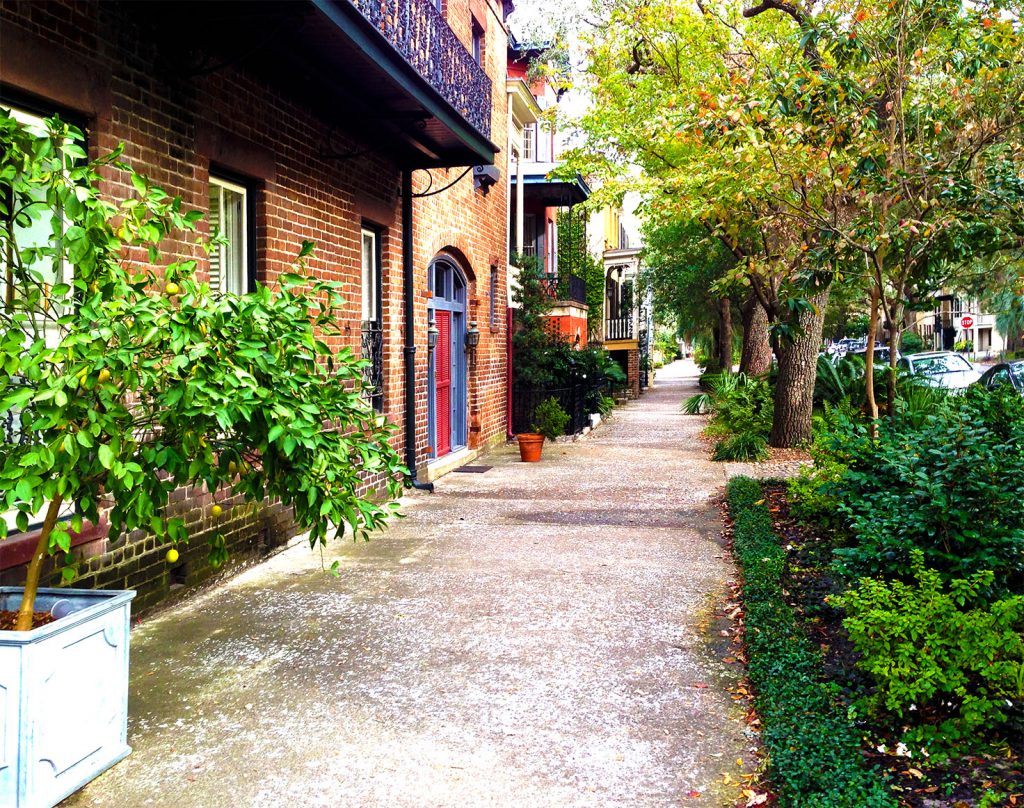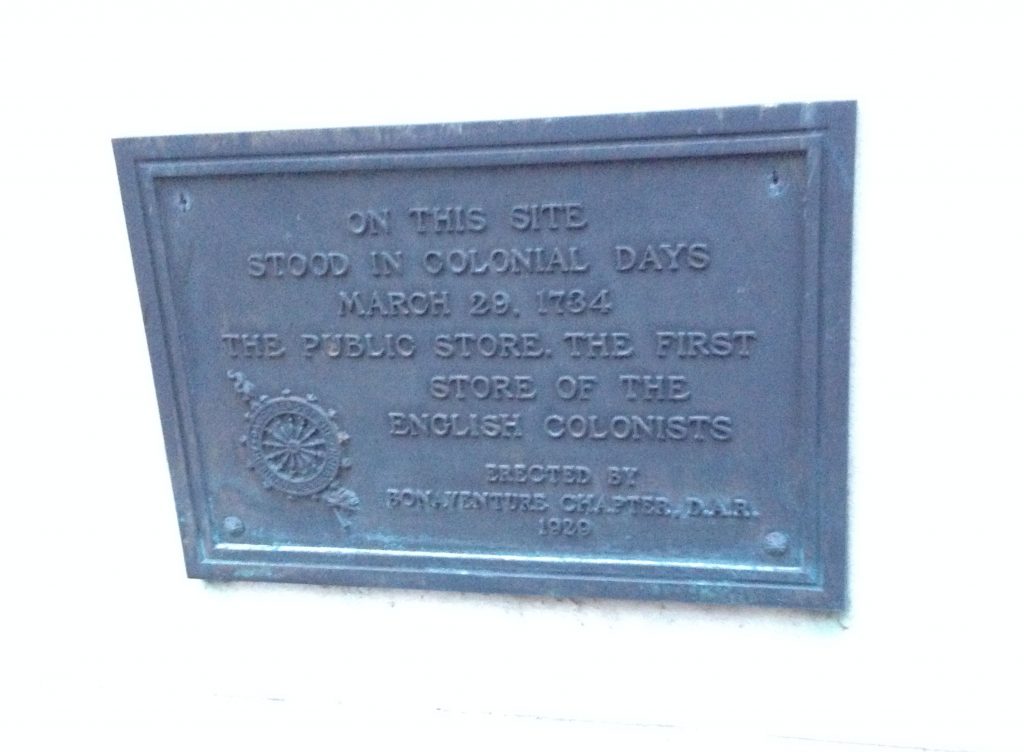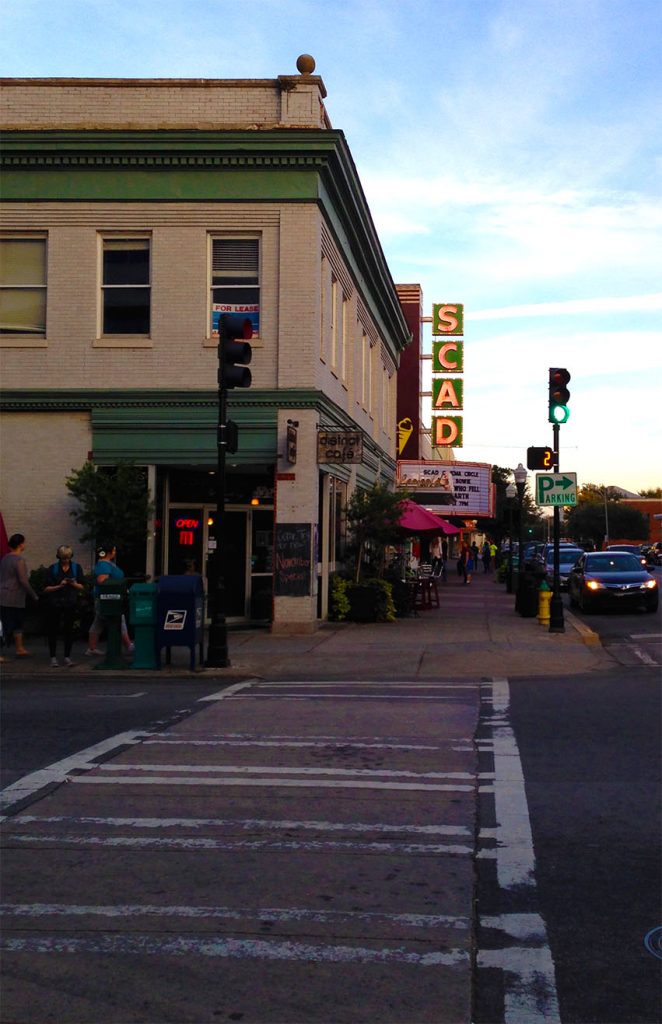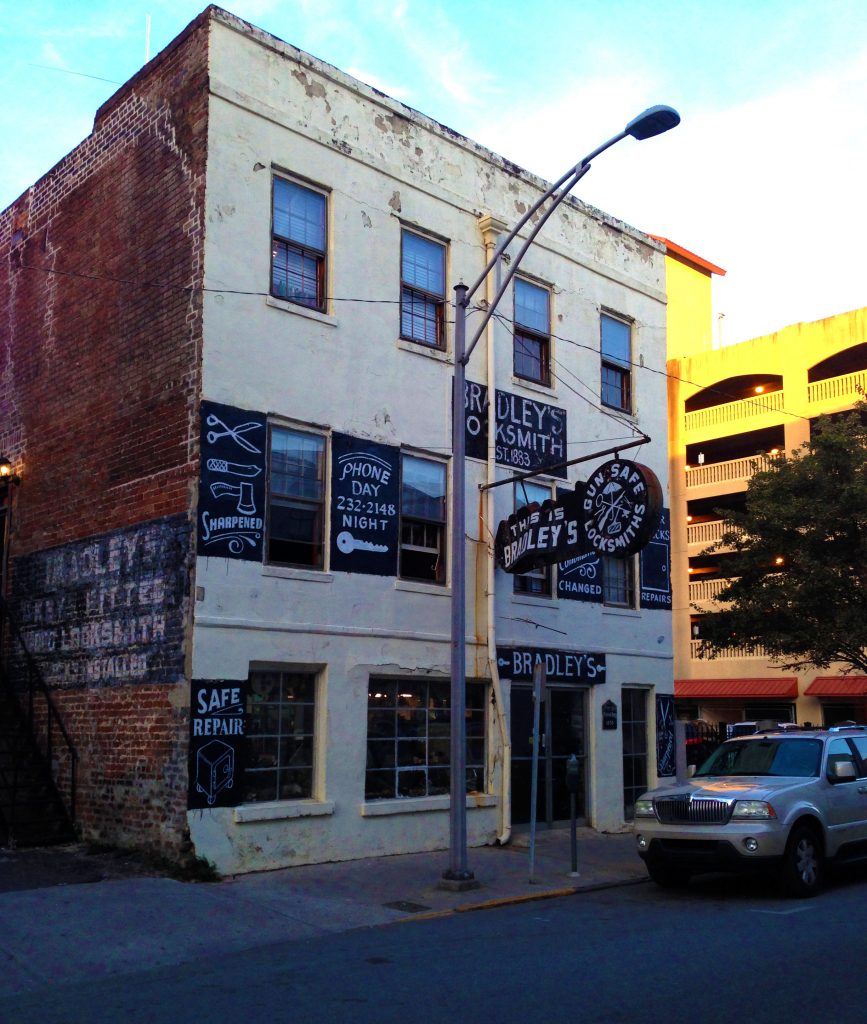Living: airbnb, historic district, Savannah GA
Working ThincSavannah, Historic Downtown, Savannah
Laundry: @airbnb
This Week in Laundry I cross boundaries in this historic Savannah.
If Boston’s made of squares, then Savannah’s nothing but them. Only in Savannah, the squares are really square. And frequent. Squares of monuments. Squares of fountains. Even squares of Forest Gump.
I had known, from my research in Over the Rhine in Cincinnati, that Savannah rivaled in size and scope as a preserved historic district.
But I was completely unprepared for just how charming this place would be.
And while OTR in Cincinnati may equal this place in both buildings and breadth, it dwarfs in comparison to the rich lush vegetation. The sprawling live oak. The cascades of Spanish moss. The rich shrubbery. And the palm.
And perhaps it’s because I’m here in November. When the weather is just about perfect. Gone is the sweltering heat of summer. The thick blanket of humidity. The pain of this place that might act to counterbalance all this seductive charm. Instead, for this week, I find only perfection.
The romantic sense this space evokes – a thick scent that bubbles between the brick and vines – between the history and the greenery – echoes a connotation of the Orlando parks. In part from the charming otherness – this is no standard concrete construction – and in part from the climate – I’ve dropped below the snow line. There are palms. There’s Spanish moss. There’s vegetation that comes only in the wake of humid climates rich in rain.
Strolling down the sidewalks, though different than Orlando, hints at what is yet to come in my weeks ahead.
And yet it is different. Because here, this feeling, this romantic place of being, one of the largest historic districts in the entire US, is just that – historic. Not artificial.
It’s little wonder that the SCAD kids – the students of the Savannah College of Art and Design – find their way so well into the Orlando development environment. For to love this place and how it feels in all its authenticity, is to carry that sense into Orlando as a creation off honest ingenuity.
The one, in some way, influences the other. And you can almost feel it.
The great student migration from SCAD to the Themed Entertainment world is not fully the cause of this place. Thought it helps.
It has more to do with the programs offered by the university. SCAD, along with a handful of other schools, represents the small circle of colleges offering programs focused on this industry. And as the school’s focus might imply – on design specifically.
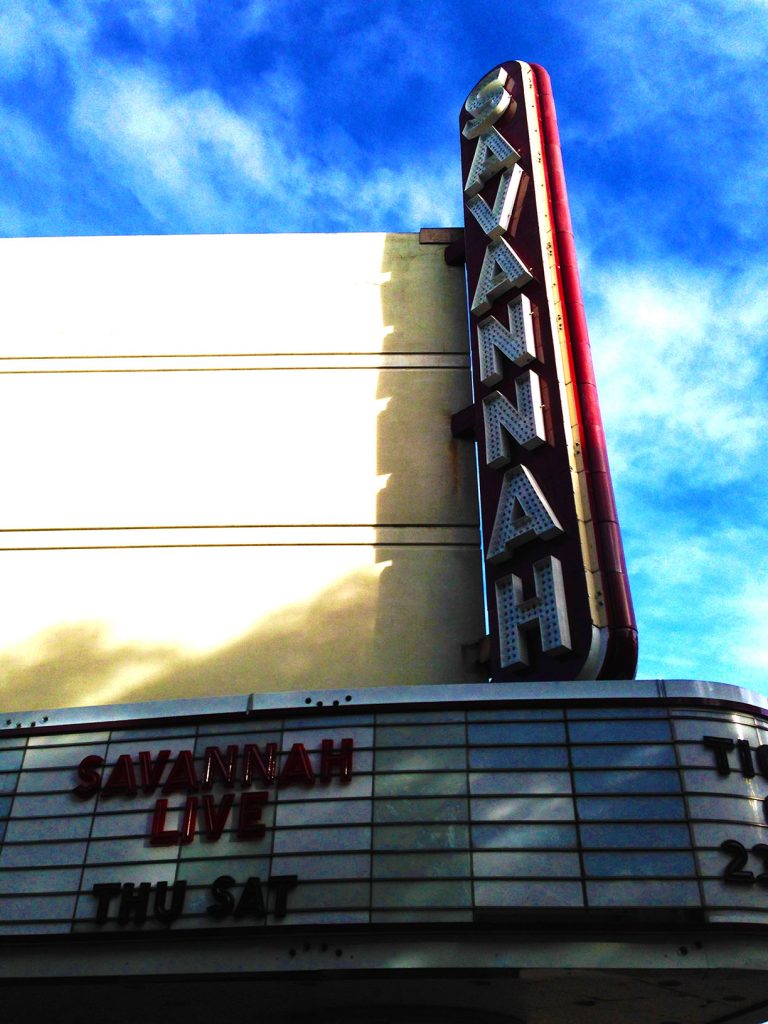
Not the only historic theater in town. The Savannah theater at Chippewa Square (the square of Forest Gump’s bench).
So it often comes to pass at a TEA event or mixer. You likely find yourself the company of the students of SCAD. Always a pleasure. I’m just not sure why they would ever leave this place. I’m guessing it’s the tuition.
And just as these students exit their studies to enter the workforce – by exiting Savannah to enter Orlando – so too will I soon leave this place for the same transition. Next week I will find my way to the Orange County Convention Center. To the International Association of Amusement Parks and Attractions Expo. The US theme park trade show.
And just as these students exit and enter their classrooms scattered across the Savannah historic district – so too do I meander from square to square in this colonial urban Georgian jungle.
Just as I exit each day my airbnb to enter my coworking space. Or that I transition from any city to any other. Opening and closing new chapters in new places by moving through spaces.
This is the nature of my travel. And this is the nature of life. Spaces divided by boundaries. Boundaries we create. Boundaries we identify. And meaning we find in each these separate places. The meaning we find in the boundaries between them. In the crossing of those boundaries. Transitions through portals – movements through doors.
These things are special in our life. Though we might find them ordinary. We use them as ways to keep thoughts organized. To keep behaviors organized. For different places demand different social rules. And we govern which is which though the significance we place in the movement between them. This is why there are thresholds. And this is why we cross them. Why we pay attention when we cross them.
This is how we come to have a home filled with bedrooms and bathrooms and family rooms and kitchens and offices and basements. Each serves a function. Largely by design. Those rooms are equipped to fit the needs of that function. But so too do we conform to that design by fitting each room to a purpose backed by our behavior. There are certain things we do in the kitchen and in the family room. There are activities that cross between each. There are spaces that are more public than others.
We may paint and decorate each room in accordance to that primary function. Or through our personalization of these places, the functions may change.
But what’s important is not just that we do different things in these spaces. Nor that these spaces come to embody certain rule sets, through function, within our minds. But that when we transition between these spaces – by walking through doors, or by leaving carpet for hardwood – we also transition within ourselves between rulesets. We transition between functions. We change behaviors.
This is a connection between cultural expression and the human behind that culture. The culture resides in the space configuration – in both the overarching design – are there ovens or washing machines in this space – and subtler decoration – blue wallpaper, or yellow walls. We are connected to these expressions. That connection influences our behaviors.
With all seriousness, you could poop in the oven. But you don’t. Because that violates the design. It violates the implicit rule. That is the nature between rules and behavior and the cultural expression in the space around you. In the design of the space around you. Also it takes flexibility.
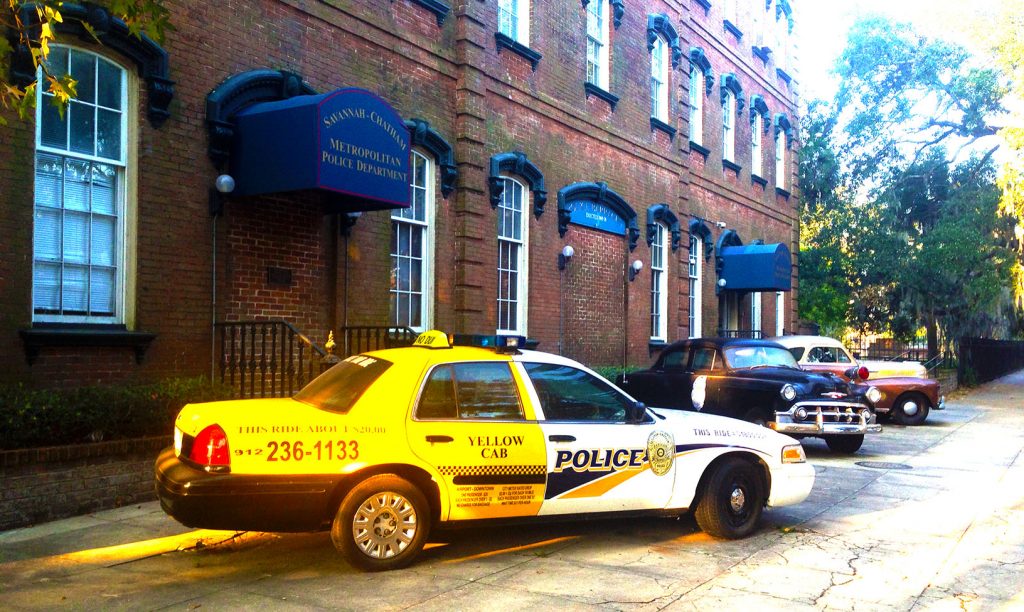
Breaking the Rules has consequences. But it depends on the kind of rule. Savannah Police cars through the decades.
Just as the rules in the spaces are important, so too are the moments when the rules change between these spaces. These are the moments when the spaces change from one another. And they are not gradual, but apparent.
We use the things that define the boundaries between these rule rich spaces to signify the transitions. We use them to help understand that moment when the rules are changed. When the behavior in the space before should be different in the behavior in the space after.
When you place one foot across the Mexican border, and the other still in the US you understand the great difference of those two places. And the border becomes significant. Not just any other piece of dirt or sidewalk. But a strong division in the rules of behavior. Both in culture and in government. You treat this boundary specially. Crossing the boundary becomes important to signify the change from one space to the other. You give it this meaning.
As it is with the US border, so too is it between the doors into homes. And the floorboards between rooms. In different subtle ways. But present all the same.
We create similar divisions in the boundary we identify between public and private. Though sometimes we find there are shades between. We still in general come to understand the difference between public spaces and private spaces.
And maybe it’s the significance we place on these objects of transition – the things we use to help trigger the changing of social spaces – that accounts for Joe Rohde’s known fascination with details in doorknobs and knockers.
And just as physical rooms come to embody meanings and expectations in behaviors that we abide by, so too do virtual ones. The way we interact online and in social media, as a form of social interaction, acts along a similar set of behavior expectations. And each online space may come to hold separate sets of cultural rules. These virtual spaces hold these rules in much the way any physical space does.
We use physical spaces to hold an ephemeral, non-physical thing – rules and behavior intent. Because we do so, the internet – an ephemeral, non-physical thing itself – somehow solidifies. It becomes a physical thing in turn. Because it takes on these social rules so easily. And we’re so used to associating these social rules to physical places.
Just as boundaries and borders are crucial in understanding when to transition between these rule sets occupying physical spaces, so too do they play a crucial role in understanding the virtual ones. Instead of doors, we have portals. Instead of spaces we have screens. Instead of rooms we have platforms. We have different social media feeds. And different ways of communicating with each other. And ways to transition between one mode and the other. These borders guide our understanding of the acceptable ways in which we can communicate with each other.
And just as different rooms fulfill distinct functions, so too do different virtual platforms embody distinct behaviors fulfilling different needs. Both in overt design elements, like ovens to sinks. And in personalization, like paint and picture frames.
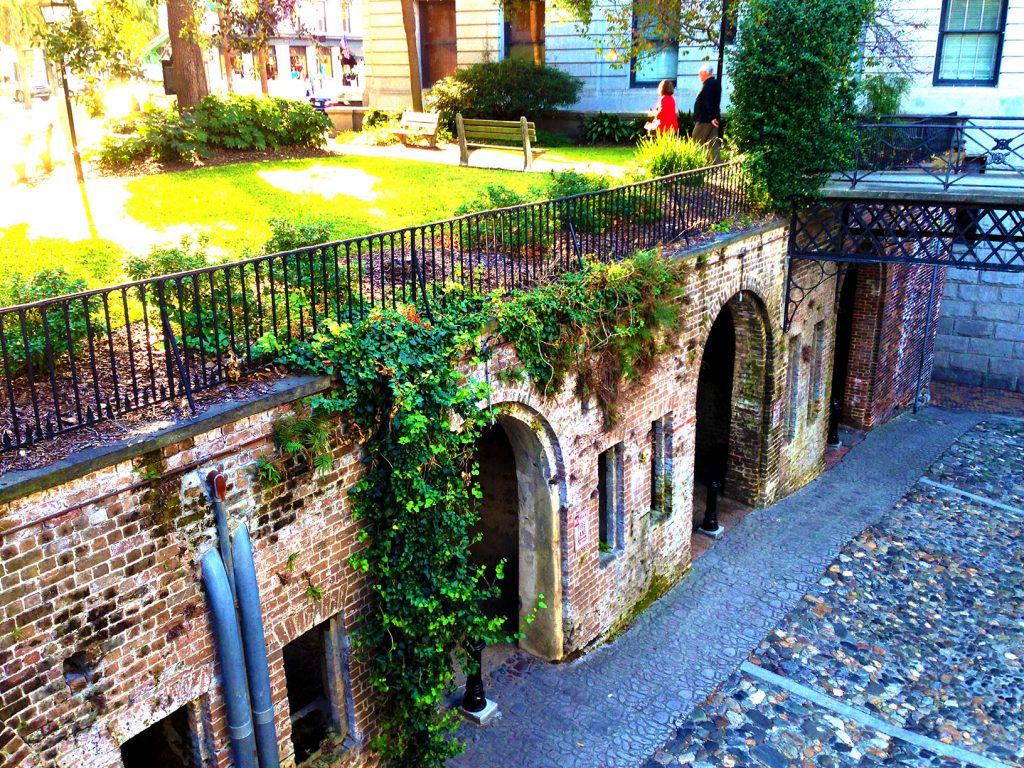
What were the functions of these holding rooms when they were built centuries ago? The bluff on the Savannah Historic District
Such is the difference between Facebook and Snapchat. In one is the sink. In the other is the oven. Somewhere there’s the toilet. Is that twitter? And not everyone leaves the seat down. That is the nature of social rules and behavior.
As for this week in laundry – I’m at quite a violation. I’ve become so accustomed to washing in public spaces. But this week I have the luxury of a machine in my airbnb. It’s in the bathroom.
It feels quite strange to conduct this vital behavior – the wash – one that I now associate with public behavior – in such a private space – the bathroom. The rules are in conflict. And when I pass beyond the door to enter that space, I find a moment of confusion. For should I open the dryer to check the dampness? Or close the door to conduct my business?
Quickly the confusion passes. The purpose of my task at hand overrides the expression and meaning I place in this space. And it could be worse. At least it’s not a toilet on the floor in the middle of a laundromat. Now that would be a strong rule violation. Both social and legal.
But now that I check my clothes, it seems they’re dry once more. And as I bring them out to pack away, the room transitions from its mixed function. For this week’s laundry is done. And tomorrow is another perfect day in this historic Savannah Georgia.

